
There has never been a better time to become a freelancer. The gig economy has grown 15x faster than the traditional job market! This explosive growth is no surprise since 90% of companies now see a mixed business model (freelance and remote work) as their key to staying competitive.
Since gig work opportunities are exploding, you’re probably wondering how to secure high-paying freelance clients. Whether a writer, social media manager, photographer, or graphic designer, you can’t run a freelance business without clients.
As a full-time freelancer myself, I’ll share practical steps you can take to get high-paying freelance clients in 2023. I’ll share methods for marketing yourself and your services, building a professional network, and creating a compelling portfolio that grabs the attention of your ideal clients.
Setting up your online presence is key
To get freelance clients, you must first set up your online presence. Creating a profile on freelance sites like Upwork is not enough. When you finally grab a client’s attention, they’ll immediately research you, so you want your online presence buttoned up.
They’ll scan your profile, click your website, and look for portfolio pieces or work samples. However, your ideal clients are most likely busy and will not have the time to dig through your website and samples if they’re hard to navigate. For those reasons, you must have your online presence polished and optimized for easy access.
Step 1: Set up a professional-looking freelance website
Having your own website as a freelance writer is critical for a few reasons:
- First, you’re not just a freelancer. You’re a business. Businesses have websites.
- You must present yourself professionally to gain trust.
- Clients use the information on your website to judge your skills and abilities.
You don’t need a web designer to have an effective freelance site. I had never built a website before, so I went with cheap web hosting through Bluehost and an easy drag-and-drop site builder, Weebly.
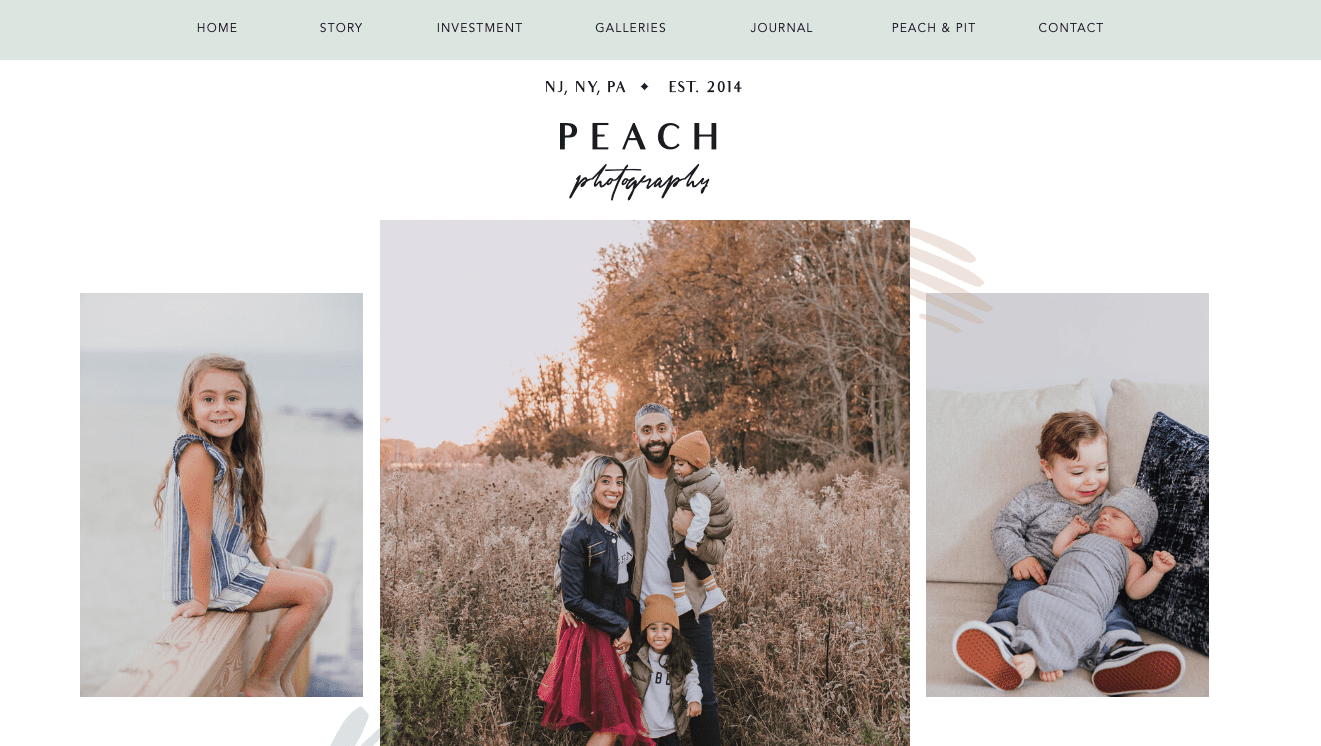
Freelance photographer website example

Web designer website example
2. Freelance-optimize your social media profiles
Regardless of how you feel about social media, you should create a professional-looking profile tailored toward potential clients. Your profile should showcase your experience, skills, qualifications, and any awards or recognition received.
Having freelance-optimized social media profiles gives you access to a large pool of potential clients and increases your visibility. Here’s how to optimize your social profiles to build client trust:
- Include portfolio pieces
Work samples are critical when optimizing your social media profiles as a freelancer. Uploading links to your samples gives potential clients an example of the quality of work they can expect if they hire you – so ensure your best work is featured prominently.
- List your services
It’s also worth including details about your services. For example, do you offer blog writing, photography, or web design? Showcasing relevant keywords in these descriptions can help boost search engine optimization (SEO), making it easier for prospective customers to find you online.
- Connect with other freelancers
Having an online presence isn’t just about building trust with potential clients – it’s also a great way for freelancers to network. In addition, it builds relationships with other professionals in the industry who could eventually lead them to more lucrative opportunities or referrals.

Example of a freelance graphic designer LinkedIn profile
-
Set up your freelance portfolio
Your freelance portfolio will showcase your experience in an organized way to prove to potential clients the quality of your work. To build a successful portfolio, you’ll include samples of your photos, writing, designs, or anything else you’ve created based on what type of freelancer you are.
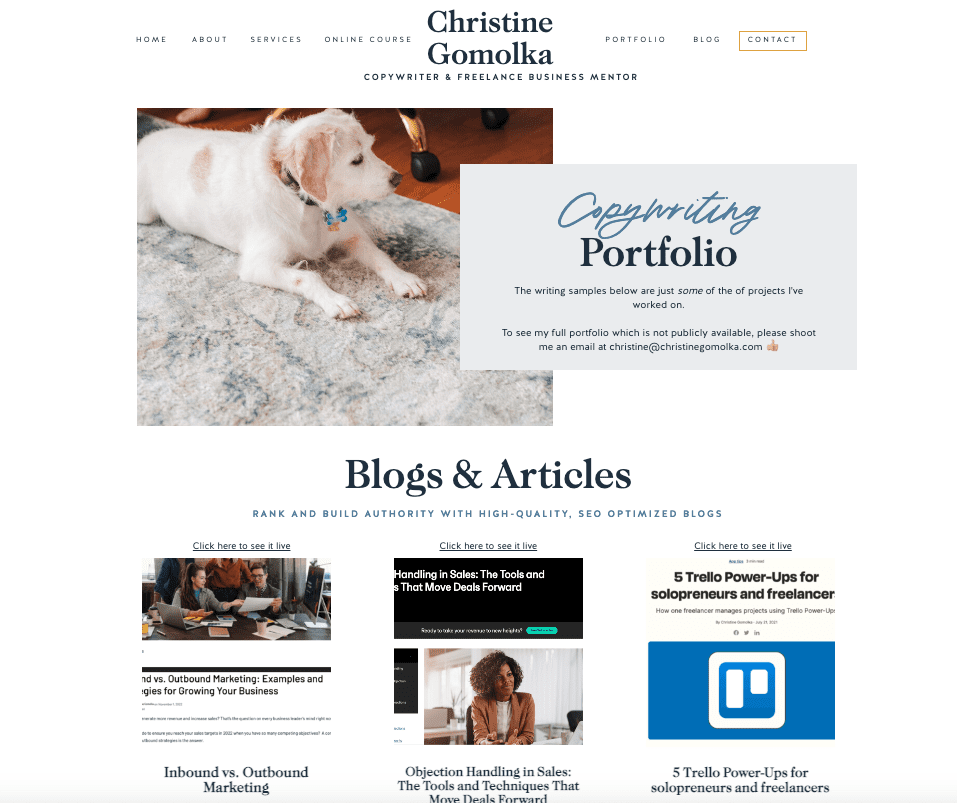
Example of a freelance writing portfolio page
If you don’t have experience, a great way to get started is to take on smaller projects for lower pay to build up a few samples for your portfolio. Additionally, make sure it’s easy for potential clients to contact you.
Your writing portfolio should live on a dedicated landing page that you can easily link to or a private cloud-hosted folder like google drive. Remember to update your portfolio regularly with new projects and accomplishments as you continue freelancing.
Cold pitching and letters of introduction
Cold pitching is essential for freelancers looking to secure work. It involves directly contacting potential clients with a proposal that outlines the value you can bring to their project.
You can cold pitch through email or social media. Regardless of the method, it is one of the most effective ways to introduce yourself and your services to potential clients and stand out from other freelancers vying for the same job.
When creating a cold pitch for a freelance opportunity, tailoring your proposal to the client’s needs is vital. In addition, your pitch should showcase your experience, qualifications, and relevant skills related to the specific project or type of work you’re applying for.
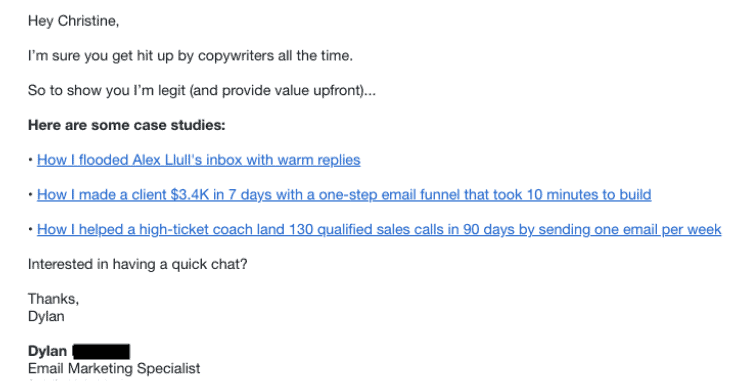
Example of a cold pitch I received from a freelance copywriter
Your pitch should demonstrate how you can help solve the prospective client’s problem or fulfill their need. The goal is to distinguish yourself from others who may be applying. Emphasize your unique specialization (niche), insights, and approaches based on your experience in the field.
For example, I always emphasize in my cold pitches that I have worked for other well-known tech brands and can quickly adopt a brand’s voice and tone.
When freelancers are looking for clients, one of the best ways to start is by creating a list of companies to contact. Who do you want to freelance? Who are your ideal clients? It’s critical to answer these questions before trying to get clients. Many freelancers miss this step.
Social media (LinkedIn, Twitter)
With the power of social media, it’s easier than ever for freelancers to reach out to potential clients and attract new business. Create a professional-looking profile tailored towards potential clients, highlighting your experience, skills, qualifications, and any awards or recognition received.
A strong presence on platforms like Facebook, Instagram, and LinkedIn can help you share your portfolio and highlight your skills and experience. Plus, engaging with other professionals in your industry through commenting on their posts or creating shareable content can help you build relationships with potential clients.

Example of a Twitter profile for a fitness professional
Freelance job boards
Make a habit of scouring freelance job boards weekly and applying for opportunities in your niche. Most freelance job boards will send new opportunities to your inbox if you opt-in for notifications.
Top freelance job boards:
Freelance job email alerts
One of the easiest steps to get clients is to sign up for job alerts on popular freelance websites. Email alerts ensure you can access the latest job opportunities in your inbox. By signing up for job alerts, you can access more job opportunities and reduce time spent manually searching posts. In addition, most major job sites have an automated email feature to send freelance opportunities to your inbox.
For example, sites like remote.co will email you free listings weekly. Also, you can sign up for job alerts on LinkedIn
Optimize for search and attract inbound leads
At the risk of sounding like a broken record, you must tailor your online presence to appeal to your ideal freelance clients. Include messages directly to your ideal clients, their pain points, and goals on your website and social profiles.
By taking the time to understand what makes your ideal clients tick, you’ll create content and services that speak directly to those needs. Be on the lookout for when a particular pain point is most relevant (like during a pandemic) or the release of a new product (like ChatGPT) so you can create relevant offers.
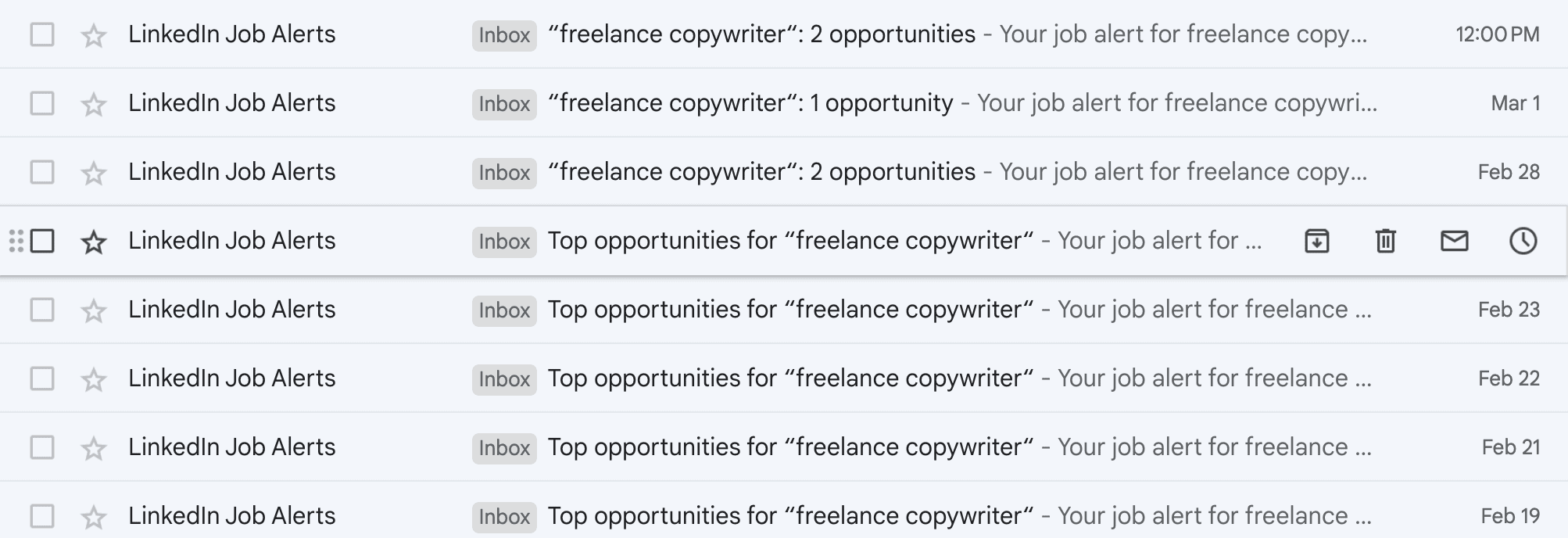
Freelance job alerts in my inbox
Ask for referrals
While waiting for referrals is a passive client acquisition strategy, asking for referrals is not. As a freelancer, referrals are essential to building your career and growing your income. Referrals can give you a reliable source of clients who trust your skills and bring you more business opportunities.
When requesting referrals from current clients, ensure you build a good relationship with them and that they’re satisfied with your work. Make a habit of keeping in touch after projects wrap.
Sending thank-you gifts when possible or even following up with handwritten cards expressing appreciation is a best practice for client satisfaction. The key is to stay top of mind with your clients.
Connecting with other freelancers
“Overflow” is a term for an excess of freelance work that becomes too much for one contractor to handle on their own. When freelancers are booked and cannot handle their current workload, they’ll either refer an additional freelancer or outsource the work.
The key to receiving “overflow” assignments is to build relationships with other freelancers in your industry. The easiest way to do this is via social media.
Share valuable content for brand awareness
Although having an impressive portfolio is helpful, you need a way to generate awareness around your services to get them to see your portfolio in the first place. That’s where social media platforms like LinkedIn and Twitter come in, allowing you to demonstrate your creativity and expertise.
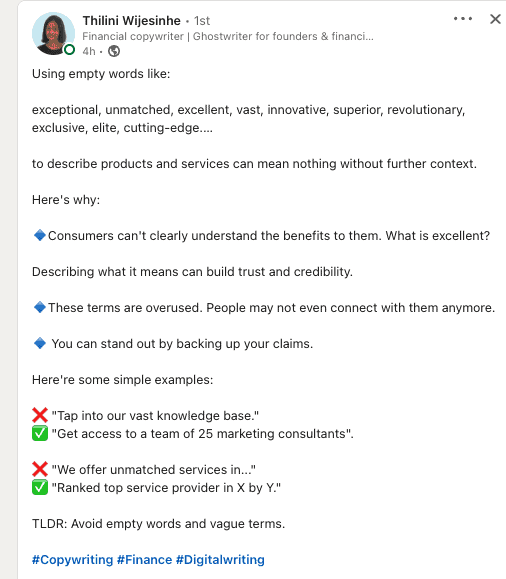
LinkedIn thought leadership post from a freelance copywriter
Create social media content that demonstrates your expertise, highlights the results you’ve achieved for past clients, and provides helpful tips and advice that is related to their field of work. Tailor this content based on your target audience to maximize engagement and reach a wider range of potential customers.
You can share free value through blog posts, infographics, videos, or social media posts tailored to certain groups. By consistently producing free valuable content on social media platforms, you’ll eventually create a distinct personal brand that will set you apart from the competition.
In-person networking events
Everything has gone online, so in-person events are often the last place freelancers turn to for gaining clients. In addition to being a great way to meet potential clients, in-person meetups are an invaluable opportunity to build relationships.
Another powerful strategy is to volunteer to do an in-person demonstration or presentation. For example, if you’re a writer, you could give a networking group a quick lesson on creating an email marketing strategy. Speaking in front of a group shows you’re serious about your career and willing to go the extra mile.
Coworking spaces
Coworking spaces are also an excellent resource for freelancers looking for new clients. These spaces provide an informal yet professional environment where independent workers can connect with fellow entrepreneurs who may have helpful advice and insights.
Also, virtual coworking spaces like Flow Club and Focusmate are springing up as a way for remote workers to fight distraction and procrastination. Many solopreneurs report forming lucrative business relationships with the people they meet during their sessions!
Join industry-specific online groups
Facebook groups are far from dead and one of the best ways to meet fellow freelancers. Some of the most popular groups are Freelancing Females and Superpath. These groups provide a sense of community for an inherently isolating and independent job.
Facebook groups provide mentorship and inspiration that’s hard to get when working solo. One of the things I love about these groups is the search feature. So when I have a question, I don’t necessarily have to post it in the group because I can find similar questions posted in the past.
Notify your network
Don’t overlook the power of letting your network know you’re available for freelance work. This is an underrated way to spread the word about your skills and increase the chances of gaining clients.
Send an email or social media DM to friends, family, and acquaintances. While you may not know anyone in your immediate circle who needs your services, you’ll soon find someone who does.
If you’re looking for a message template for notifying your network that you’re available for freelance work, download The Freelance Template Playbook 
Freelance bidding platforms
Platforms like Upwork and People Per Hour connect freelancers to businesses and agencies in need of contractors. Clients post job postings as ‘projects,’ which freelancers bid on by submitting proposals outlining their experience and qualifications.
Freelance platforms are better suited for newer freelancers, allowing writers to create portfolios quickly, submit proposals, and connect with potential employers. Clients appreciate quality pitches tailored to their project requirements, so always ensure your proposal outlines how you plan to accomplish this goal.
The bottom line on finding high-paying freelance clients
As a freelancer, you’ll finally have the independence and autonomy a 9-5 or corporate job can’t give you. Finding freelance clients may seem like an uphill battle initially, but it gets easier with time.
If you have persistence and resilience, you can pursue your passion, replace your 9-5 income, and live the life you want.
By setting up your online presence correctly, you’ll quickly build trust with freelance clients and get into the mindset of a business owner. Take advantage of strategies like cold pitching and resources like job boards and networking events to get started as a successful gig worker.
Watch this video now to learn how to cold pitch for freelance clients on LinkedIn.
Let's Connect!